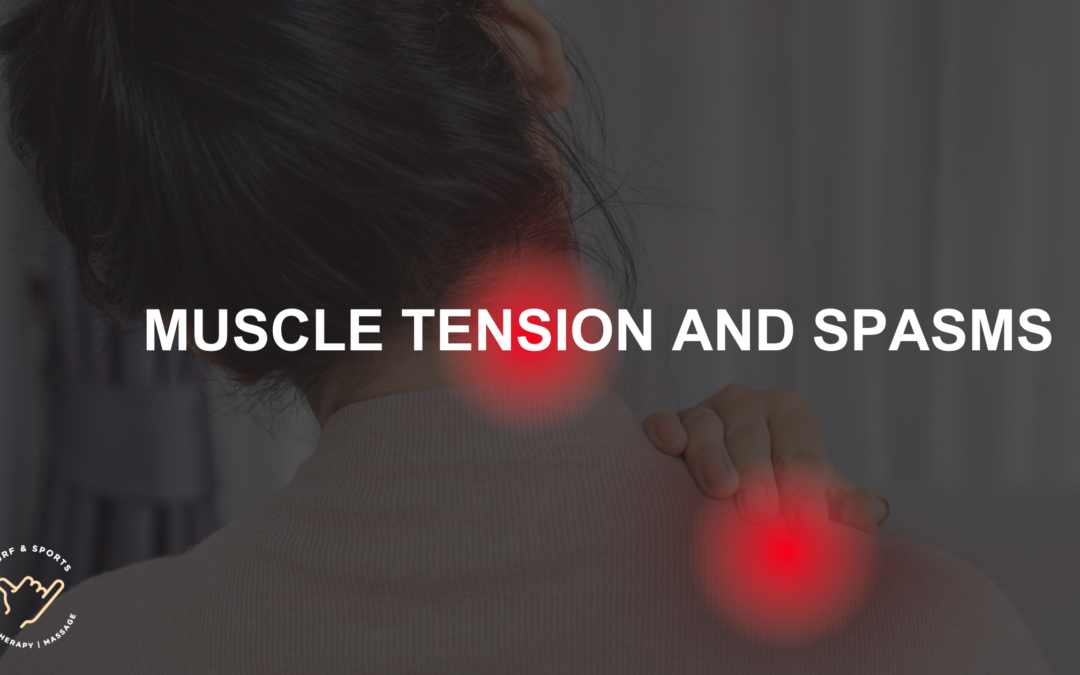If you’ve ever been stopped in your tracks by a muscle cramp or felt the day-after soreness from an intense workout, you’re likely on the lookout for effective ways to ease your discomfort. Beyond the reach of the medicine cabinet, there’s a world of natural remedies for muscle tension that can offer relief without reliance on synthetic options. From muscle cramp remedies found in your pantry to muscle relaxation techniques that require nothing more than a bit of space and time, reducing muscle tension can be as close to nature as you prefer.
Whether you’re seeking muscle spasm treatment after a spirited footy match or looking to reduce muscle tension from a day at the desk, going natural might just provide the answers. Navigate through the many muscle spasm relief options available and uncover the muscle tension relief methods that align with a holistic approach to your wellbeing.
What’s muscle spasm, and why do they happen?
So, what’s a muscle spasm?
Imagine that your muscles are like a little engine inside you. Sometimes, this engine gets all tight and knotted up—that’s a muscle spasm. It’s like when your muscle decides to throw a mini-tantrum and squeezes really hard without relaxing. This can feel ouchy and uncomfortable!
Now, why do these spasms happen?
There are lots of reasons! If you play a lot, run around a lot, or even sit still for a really long time, your muscles might not be super happy about it. They need a good balance of moving and resting. Also, muscles love water—it’s like their favorite drink! If you don’t drink enough water, they might start cramping up as if saying, “Hey, we’re thirsty!”
Causes of Muscle Spasms and Tension
- Dehydration: Not drinking enough water can lead to muscle cramps.
- Overuse and Strain: Excessive exercise or using a muscle too much can cause spasms.
- Stress: Emotional stress can physically manifest as muscle tension.
- Fatigue: Tired muscles are more prone to spasms.
- Electrolyte Imbalances: Low levels of potassium, calcium, or magnesium can trigger spasms.
- Poor Circulation: Inadequate blood flow to a muscle can contribute to cramps.
- Cold Temperatures: Muscles can tighten and spasm in the cold.
- Sitting or Standing Too Long: Prolonged positions can cause muscle tension.
Symptoms of Muscle Spasms and Tension
- Sudden, sharp pain: A hallmark of a muscle spasm.
- Muscle Tightness: A feeling of the muscle being tense or hard to the touch.
- Twitching: The muscle may twitch or move involuntarily.
- Reduced Mobility: Difficulty moving the affected muscle normally.
- Soreness: The muscle may feel tender or achy.
- Visible Knotting: You might see or feel a knot in the muscle.
- Chronic Discomfort: Persistent muscle tension can cause ongoing discomfort.
Treatment and Prevention for Muscle Spasm
Avoiding Risks of Over-the-Counter Muscle Relaxants
- Use with Caution: Over-the-counter muscle relaxants can cause side effects like drowsiness and dependency.
- Seek Safer Alternatives: Opt for natural methods to avoid these risks and maintain long-term well-being.
Diet and Hydration for Muscle Health
- Magnesium-Rich Foods: Include almonds, black beans, and edamame in your diet to support muscle function and prevent spasms.
- Stay Hydrated: Drink water and electrolyte-rich beverages to prevent dehydration-related muscle spasms and reduce fatigue.
Natural Muscle Spasm Relief
- Cherries: Rich in antioxidants, they help in easing post-exercise muscle pain.
- Blueberries: Contain anti-inflammatory polyphenols, beneficial for workout recovery.
- Turmeric: Contains curcumin, a natural muscle relaxant.
- Pomegranate Juice: High in antioxidants, aids in muscle recovery.
- Arnica and Capsaicin Cream: Effective for sore muscles and inflammation.
- CBD Oil: Known for its anti-inflammatory properties, useful for muscle pain.
- Essential Oils: Peppermint and lemongrass oils for pain relief and reducing inflammation.
Physical Techniques for Muscle Tension and Spasms
- Remedial Massage: Focuses on healing specific areas of muscle tension and imbalance. It uses various techniques to deeply penetrate muscles, promote relaxation, and improve overall circulation.
- Regular Stretching: Enhances flexibility, increases blood flow, and reduces muscle tension. Simple exercises like calf and thigh stretches are beneficial.
When to use Hot and Cold Therapy to cure muscle stiffness?
To manage muscle discomfort, applying hot therapy or cold therapy can be remarkably effective.
Heat therapy helps to relax muscles and increase blood flow, thus it’s best used for chronic muscle tension.
Conversely, cold therapy is excellent for reducing inflammation and providing numbing pain relief, making it more suitable for acute muscle spasms.
Understanding when to use each type of therapy can significantly improve your recovery process.
| Therapy Type | Benefits | Usage |
|---|---|---|
| Hot Therapy | Soothes and relaxes tight muscles | Chronic muscle tension, stiffness |
| Cold Therapy | Reduces inflammation, numbs pain | Acute muscle spasms, recent injury |
When to consult a Doctor?
Consult a doctor if you experience persistent or severe muscle pain, frequent spasms, accompanying symptoms like fever or swelling, weakness or numbness, spasms following an injury, limited mobility, systemic issues like dehydration, have a pre-existing medical condition, or spasms occur without an obvious cause.
Conclusion
In conclusion, remember that your body is a remarkable system that thrives on care and balance. Embracing natural remedies and techniques for muscle spasms and tension is not just about treating discomfort; it’s about nurturing your body holistically.
From the simple acts of staying hydrated and choosing nutrient-rich foods to the soothing touch of a remedial massage or the deliberate practice of stretching, each step you take is a stride towards better muscle health. Listen to your body, and if symptoms persist, don’t hesitate to consult a healthcare professional.
Your journey to a more comfortable, tension-free life is well within reach, naturally.

